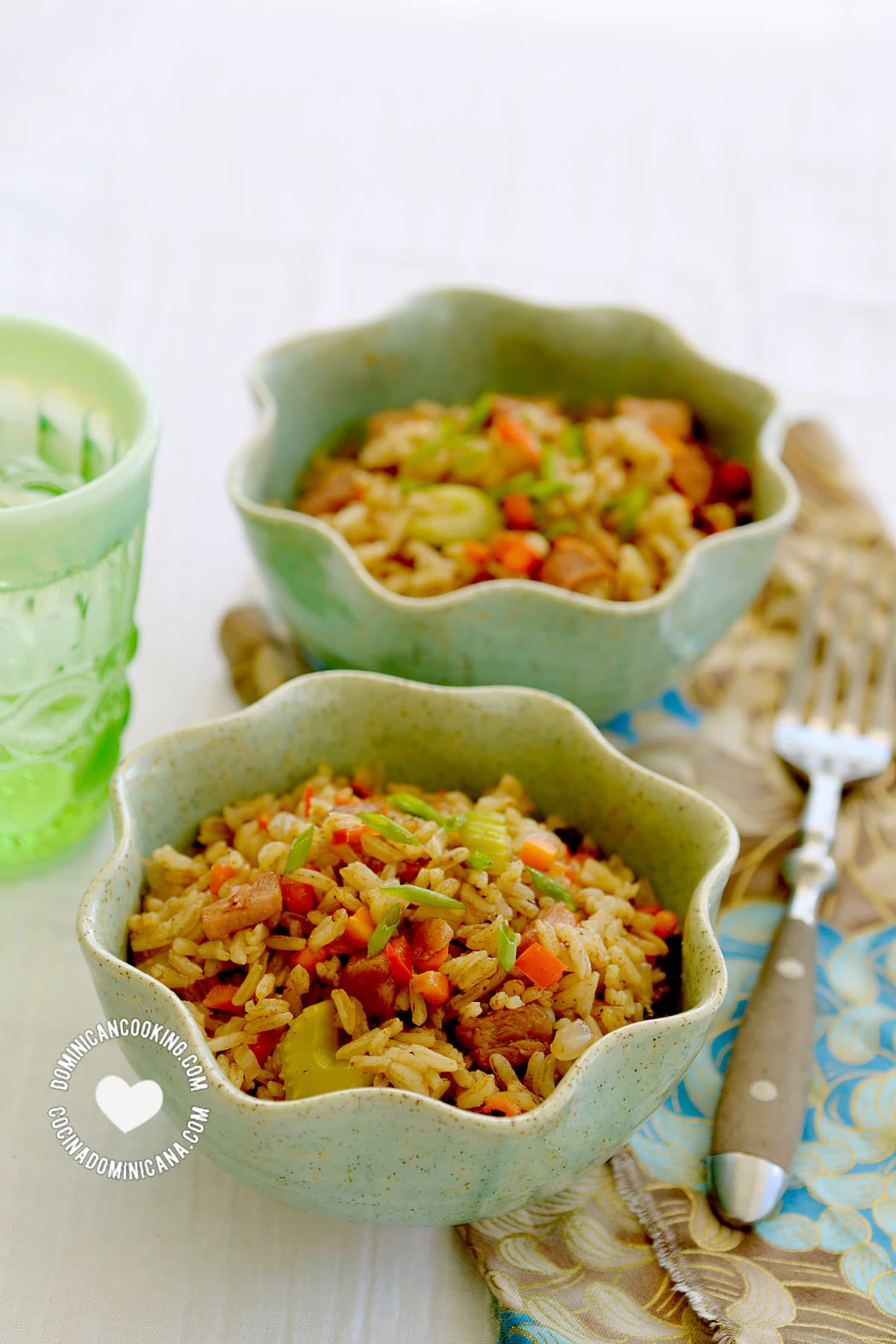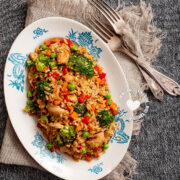Chofan (Dominican Chow Fan) is just one example of the influence of the Chinese-Dominican community in our cuisine. A humble, flavorful, inexpensive dish, it can be found on Calle Duarte in Santo Domingo Chinatown to the most remote Dominican town.
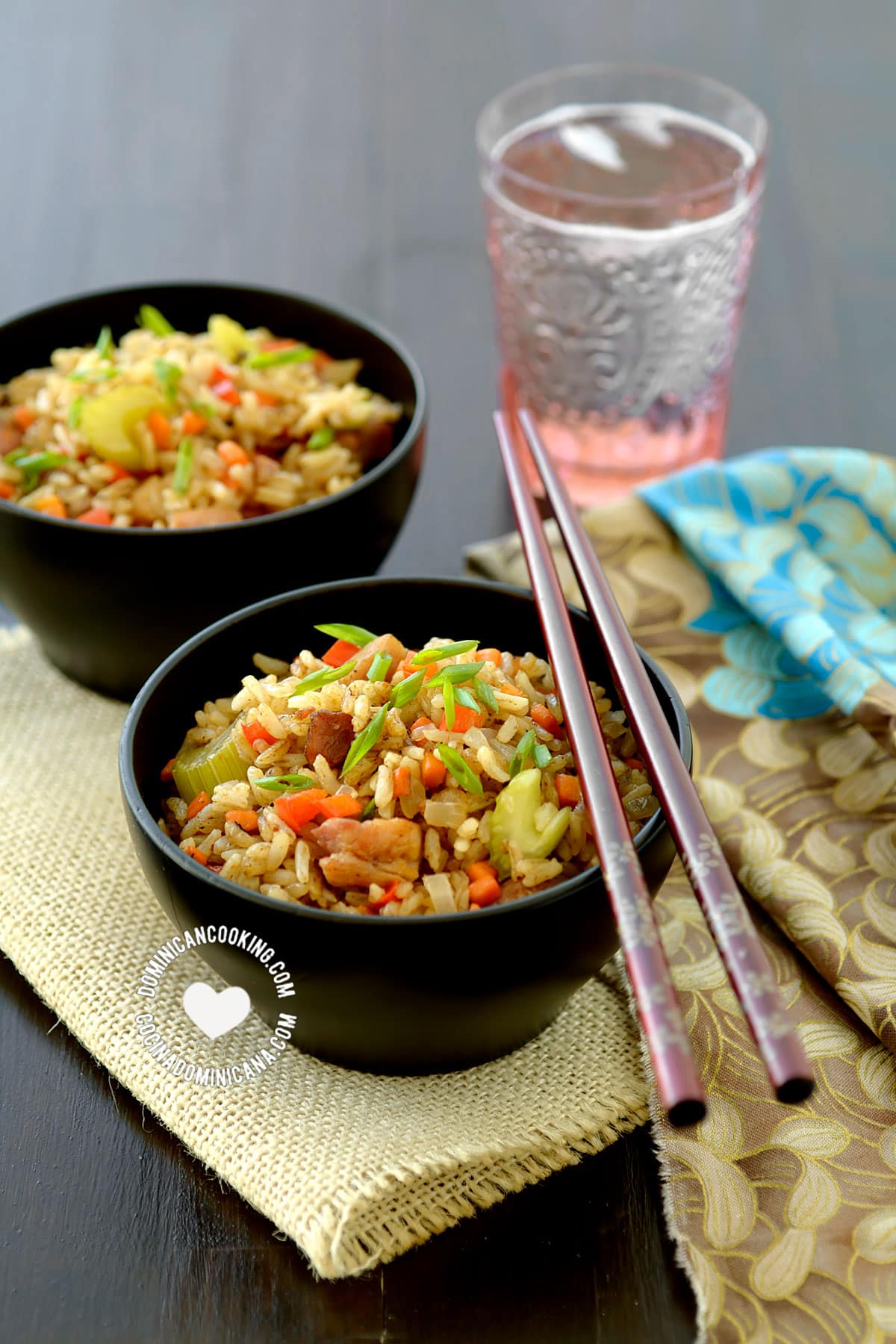
Why we ❤️ it
Like all dishes that have been aplatanados (dominicanized), this chofan recipe has differences from the original Chinese fried rice recipe. This flavorful and filling way to reuse leftover Arroz blanco is one of the top-most searched rice dishes on our blog.
In this chofan recipe I tried to recreate the flavors from my favorite cheap Chinese joints on Calle Duarte and Mella Ave. in Santo Domingo, where I had very many a weekend lunch when I lived in La Capital.
From Chow Fan to Chofán
Wondering what Chofan – an Asian-looking dish – is doing in a Dominican food blog? Here's something interesting for you...
Over 30,000 people of Chinese origin live in the Dominican Republic, and their influence in many areas of our culture, commerce, academia, and gastronomic heritage are quite obvious.
Read more about the history and influence of the Chinese-Dominican community.
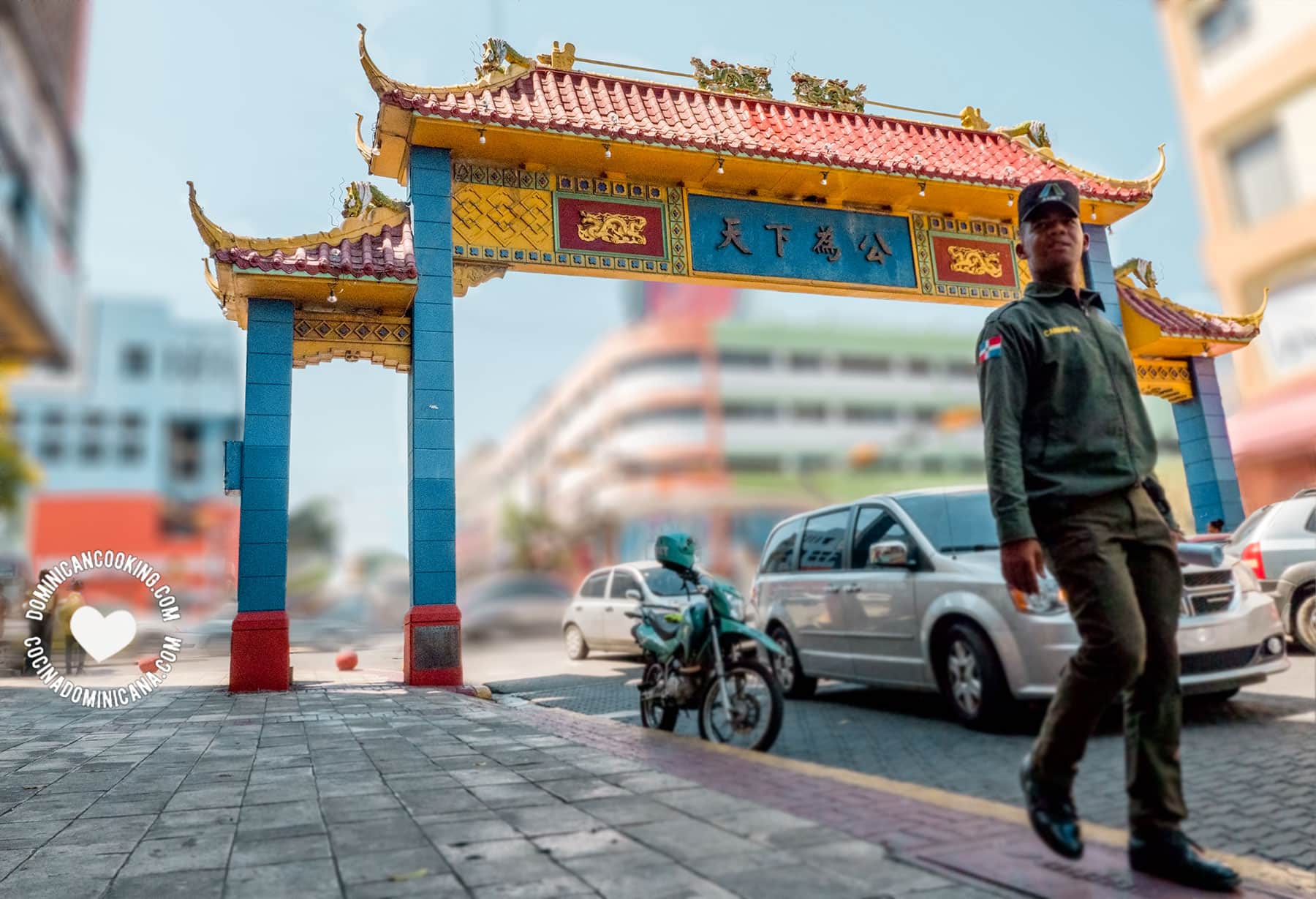
Entrance to Chinatown in Santo Domingo
Top tips
- To make Chofán de pollo (chicken fried rice), just use diced rotisserie chicken instead of pork chops. You can also brown 2 raw chicken breasts, diced and seasoned with some salt, and onion and garlic powder.
- You can make a vegan version with just vegetables, perfect to serve as a side dish with some tofu chopsuí.
- Other variations are very thinly-sliced pork, smoked ham, and even salami! My favorite is chofán de camarones (fried rice with shrimp).
- Dominican fried rice is best made with leftover Arroz blanco (white rice). Keep all those bits of leftover rice in the fridge and you won't have to cook rice from scratch for this dish.
- Do not add water while cooking, the vegetables release enough liquid to rehydrate the rice. You don't want mushy chofán, it's supposed to be "bien graneado".
- You can serve it topped with scrambled eggs, as it is often found in our restaurants.
- Dominican chofán is one of my favorite dishes to reuse leftovers.
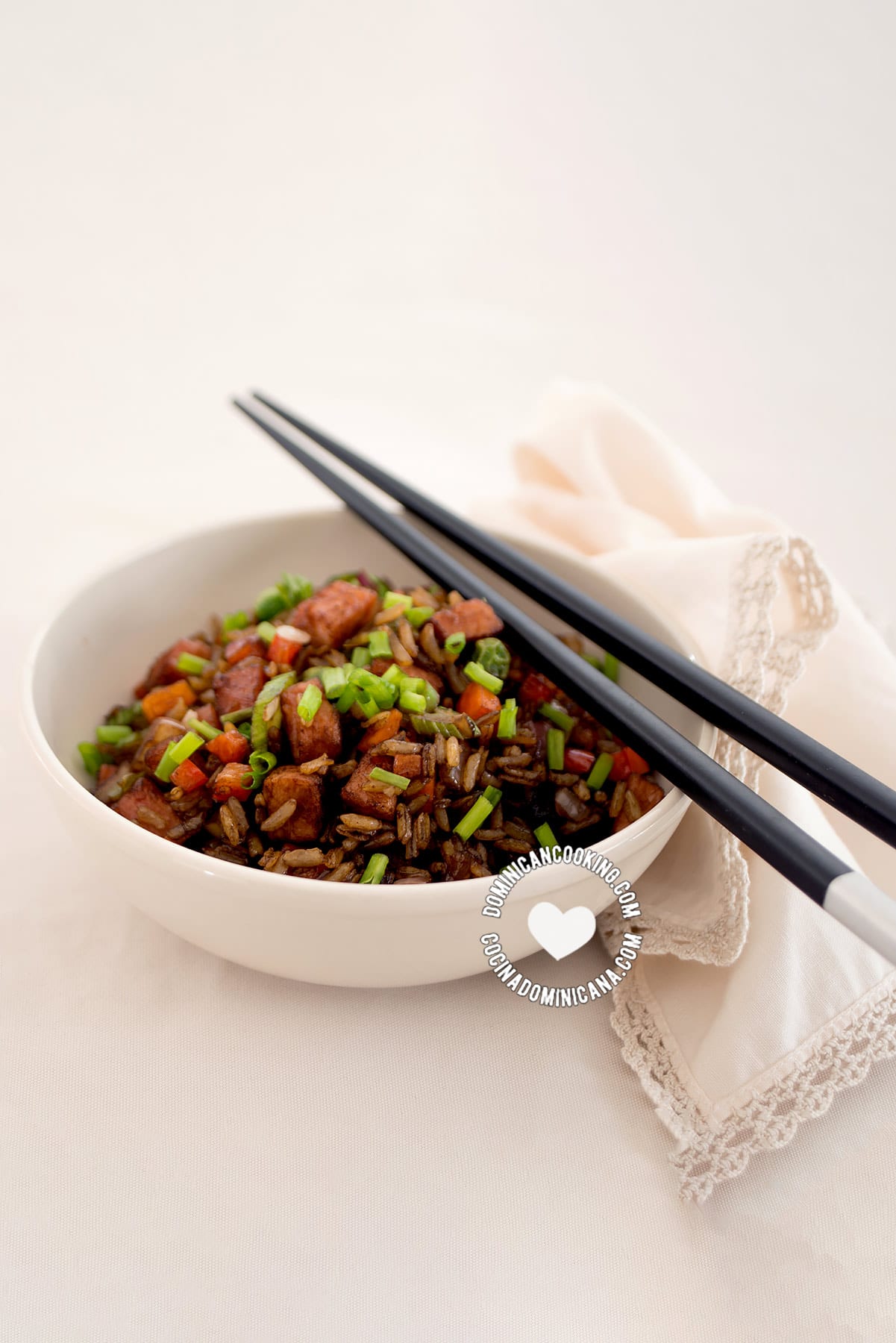
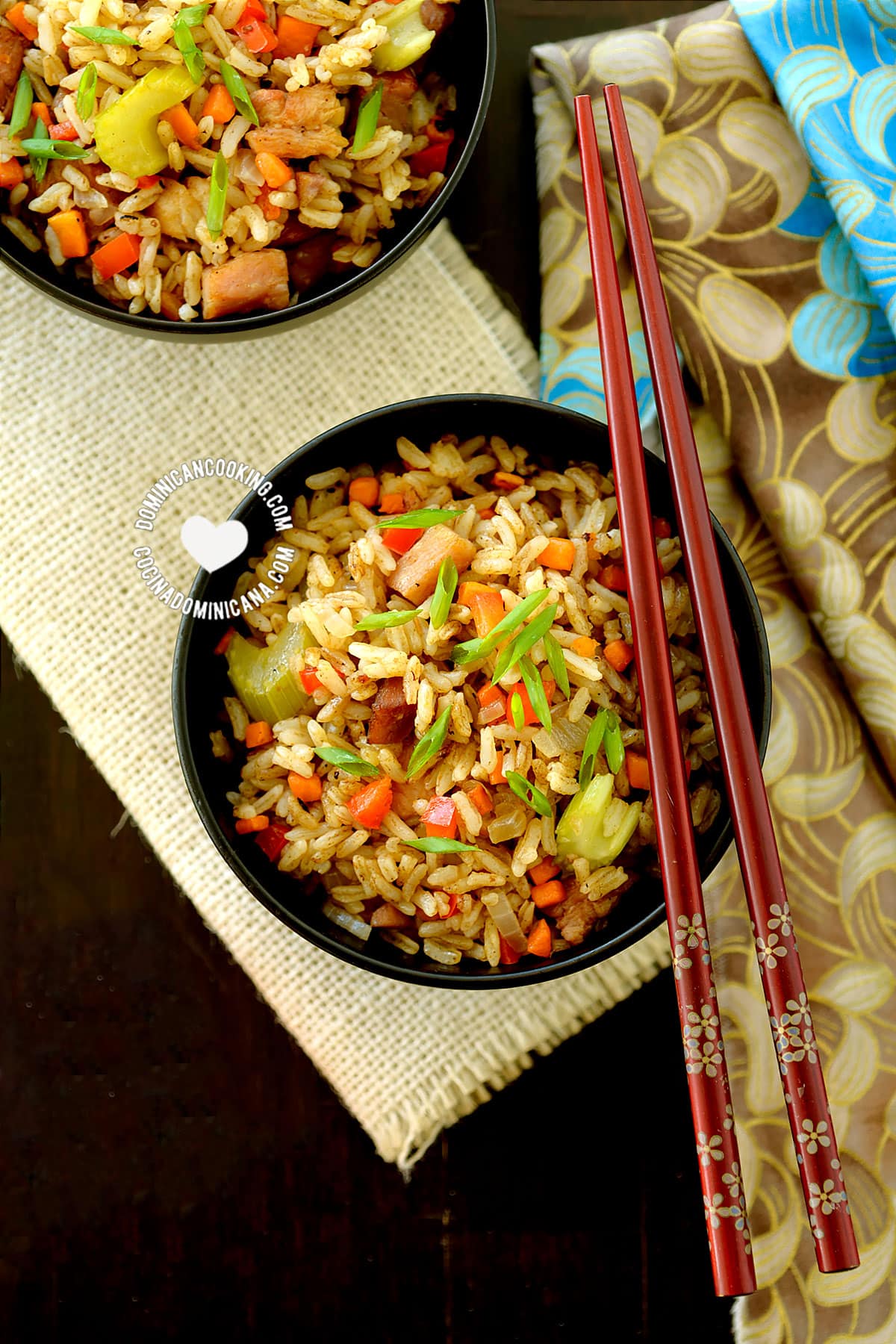
Chofán (arroz frito "chino")
Serving suggestions
Chofán is a one-pot meal. It is rarely served with anything else. In Chinese restaurants, you could order Chopsuí (chop suey) as main dish, and serve the chofán as a side dish.
Unsurprisingly, I've been served Chofán with Tostones in some Dominican fondas.
About our recipe
The first thing you must know is that even in the restaurants of Chinese-Dominican owners there is no "authentic" or standard way to do this dish. Different versions can be found with different meats, vegetables, or seafood, and there are also different ways to make homemade "Chinese rice".
In this recipe for Dominican chofán, I have tried to recreate my favorite of the Chinese restaurants of La Duarte and La Mella avenues (in Sto. Dgo.), which I frequented in my years as a university student with little budget to eat out. If you have a favorite chofan dominicano, we'd love to hear it. Do you add any extra veggies? Let me know in the comments!
Buen provecho!

Recipe
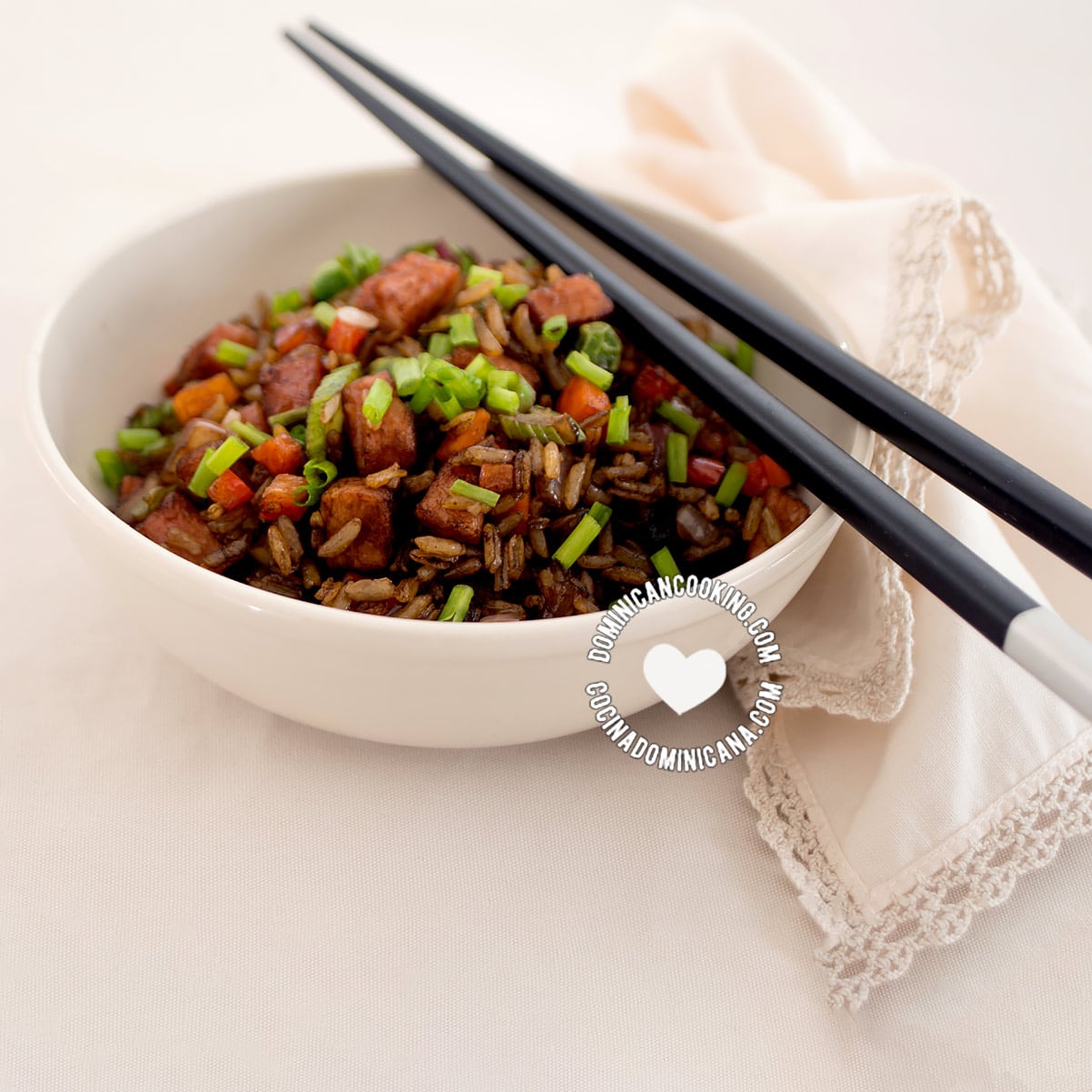
[Recipe + Video] Chofan (Dominican Chow Fan)
Ingredients
- 3 tablespoons vegetable oil, (peanut, corn or soy, see notes)
- 1 pound boneless pork chops, diced
- 1 large carrot, diced
- 1 celery stalk, sliced
- 1 red bell pepper, or green bell pepper, diced
- 1 large red onion, diced
- 8 cups cooked white rice (arroz blanco per our recipe), made with our recipe (see notes)
- ¼ cup of blanched green peas [petit pois - may be canned], (optional)
- ¼ cup soy sauce, or to taste
- ¼ cup of chives diced finely, (or scallions, if you don't have chive)
Instructions
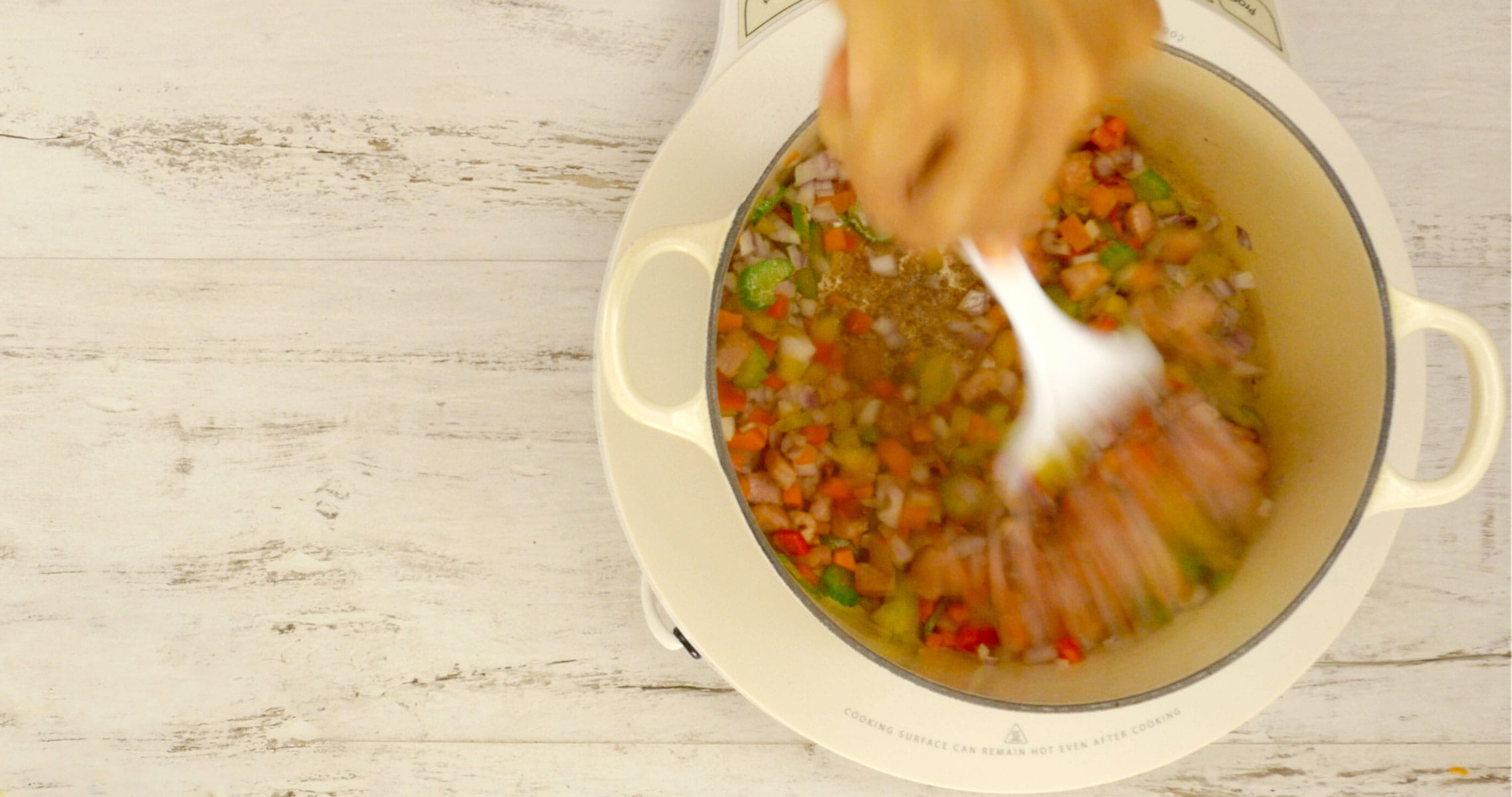 Heat the oil over high heat in a wok (or large skillet or a big pot, if you don't have a wok). Add the pork chops and cook and stir till they brown. Add the carrots and cook and stir for 30 seconds. Add the celery and cook and stir for another 30 seconds. Add bell pepper and onion and sauté and stir for 30 seconds.
Heat the oil over high heat in a wok (or large skillet or a big pot, if you don't have a wok). Add the pork chops and cook and stir till they brown. Add the carrots and cook and stir for 30 seconds. Add the celery and cook and stir for another 30 seconds. Add bell pepper and onion and sauté and stir for 30 seconds.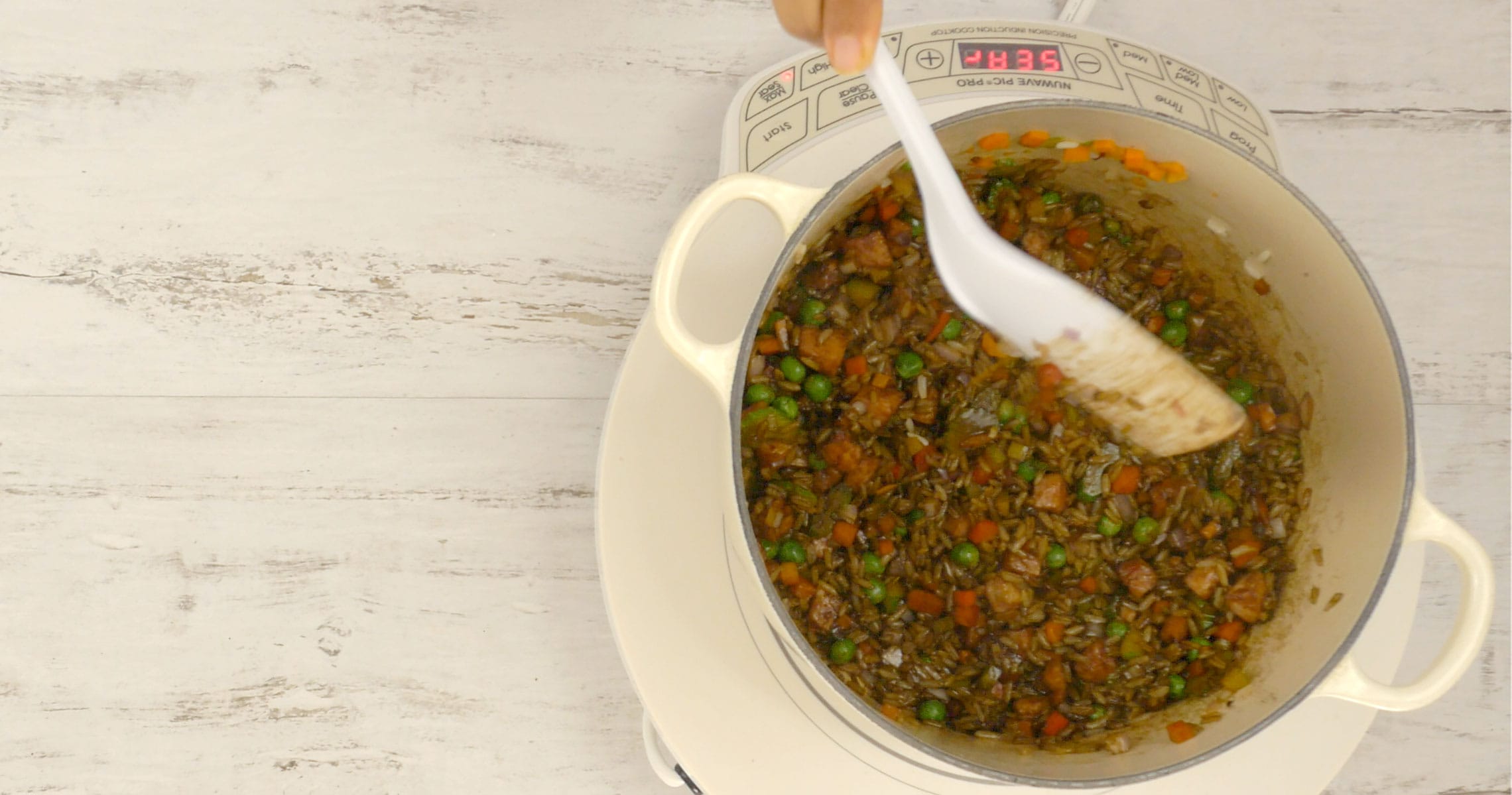 Add the cooked rice, and the peas (if you use them) and mix well until all there are no clumps of rice left. Drizzle with soy sauce to taste and mix well.
Add the cooked rice, and the peas (if you use them) and mix well until all there are no clumps of rice left. Drizzle with soy sauce to taste and mix well.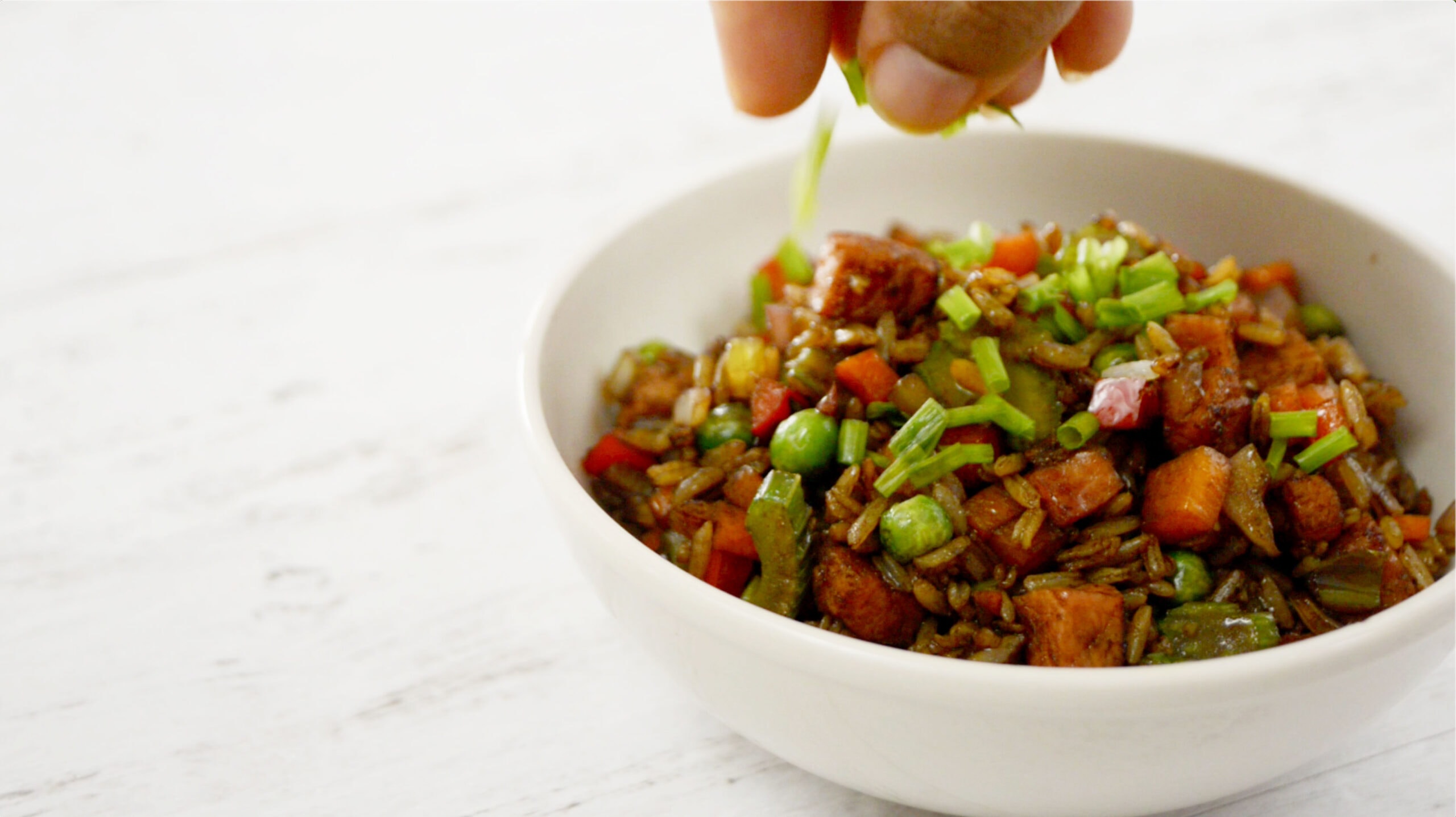 Remove from the heat and serve. Garnish with the chives.
Remove from the heat and serve. Garnish with the chives.
Video
Tips and Notes
Nutrition
Nutritional information is calculated automatically based on ingredients listed. Please consult your doctor if you need precise nutritional information.
FAQs
Chofan is made by sauteing vegetables, meat and cooked white rice, then adding with soy sauce.
Also spelled chow fan, Chowfan is a westernized version of Chinese fried rice.
History of Chinese-Dominican culture
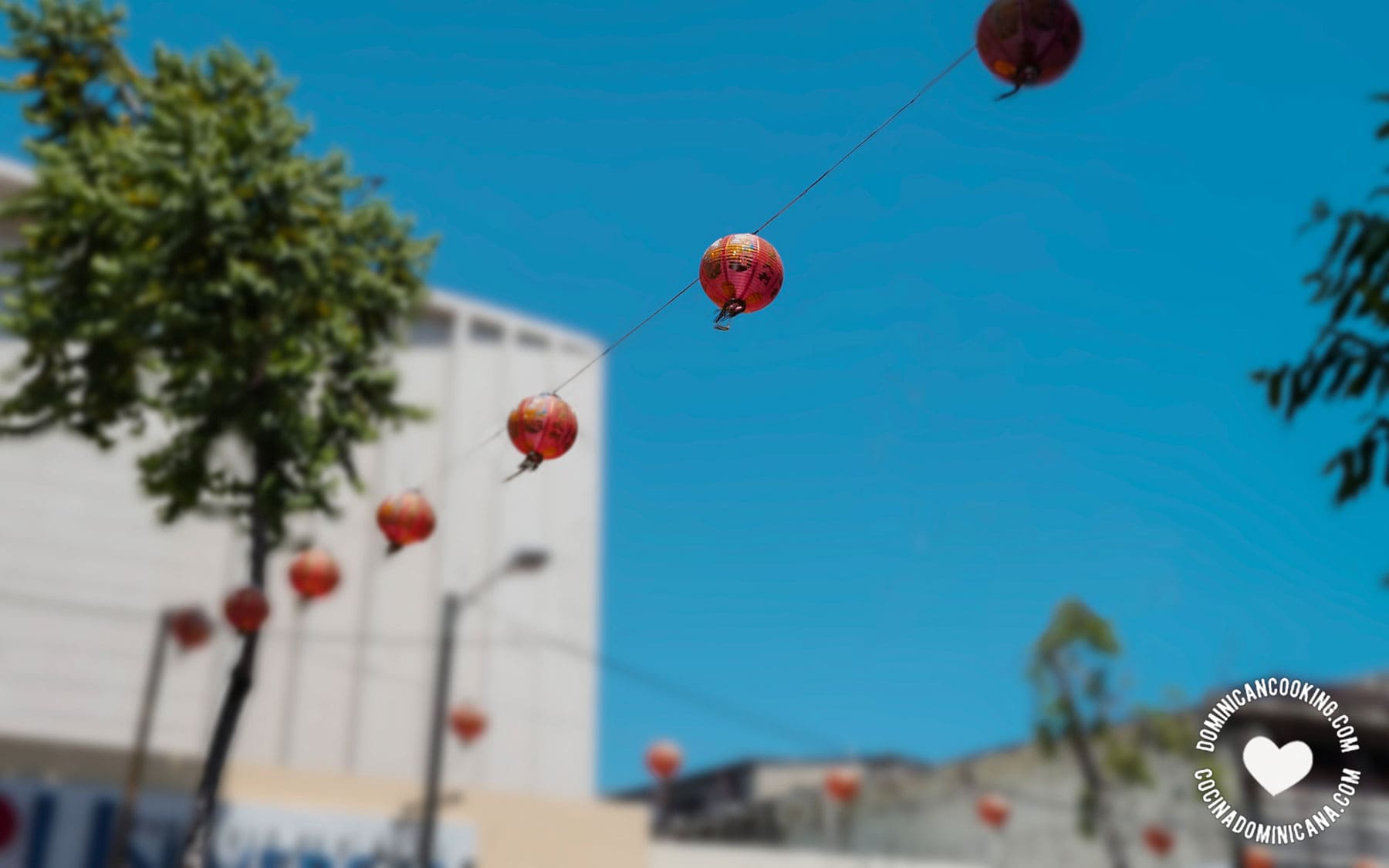
Chinese lamps in Santo Domingo Chinatown
This part has been written and researched by Aunt Ilana
Chinese culture in the DR has received formal recognition with the opening of Santo Domingo’s Chinatown as a cultural and tourist attraction in the old Chinese business district in the capital, in the Avenida Duarte area. As well as the site of several popular Chinese restaurants and supermarkets, it is also where the traditional Chinese New Year celebrations are held.
Migration from China began in the second half of the 19th century and continues to this day. Many Chinese immigrants also came to the DR from other parts of the region like Puerto Rico, Jamaica, Peru, and Ecuador.
The early Chinese immigrants to Latin America and the Caribbean came or were brought over to work as laborers in the sugar plantations in the English and Spanish colonies and former colonies after the slave trade became illegal in the 19th century. The ones who followed tended to be entrepreneurs: they opened businesses like laundries, bakeries, supermarkets, and hotels and restaurants.
Chinese immigrants to the DR opened popular eateries known as ‘pica pollo’ all over the country, selling fried chicken and a combination of Dominican and Chinese food. They also opened more upscale Chinese restaurants in the main cities, and these soon became popular with the locals.
In this way, Dominicans of all socio-economic levels got to know and love Chinese food, going as far to make some dishes their own, including chop suey, chofán (chow fan) -- fried rice with chicken -- and chicharrón de pollo.
"Los chinos de Bonao"
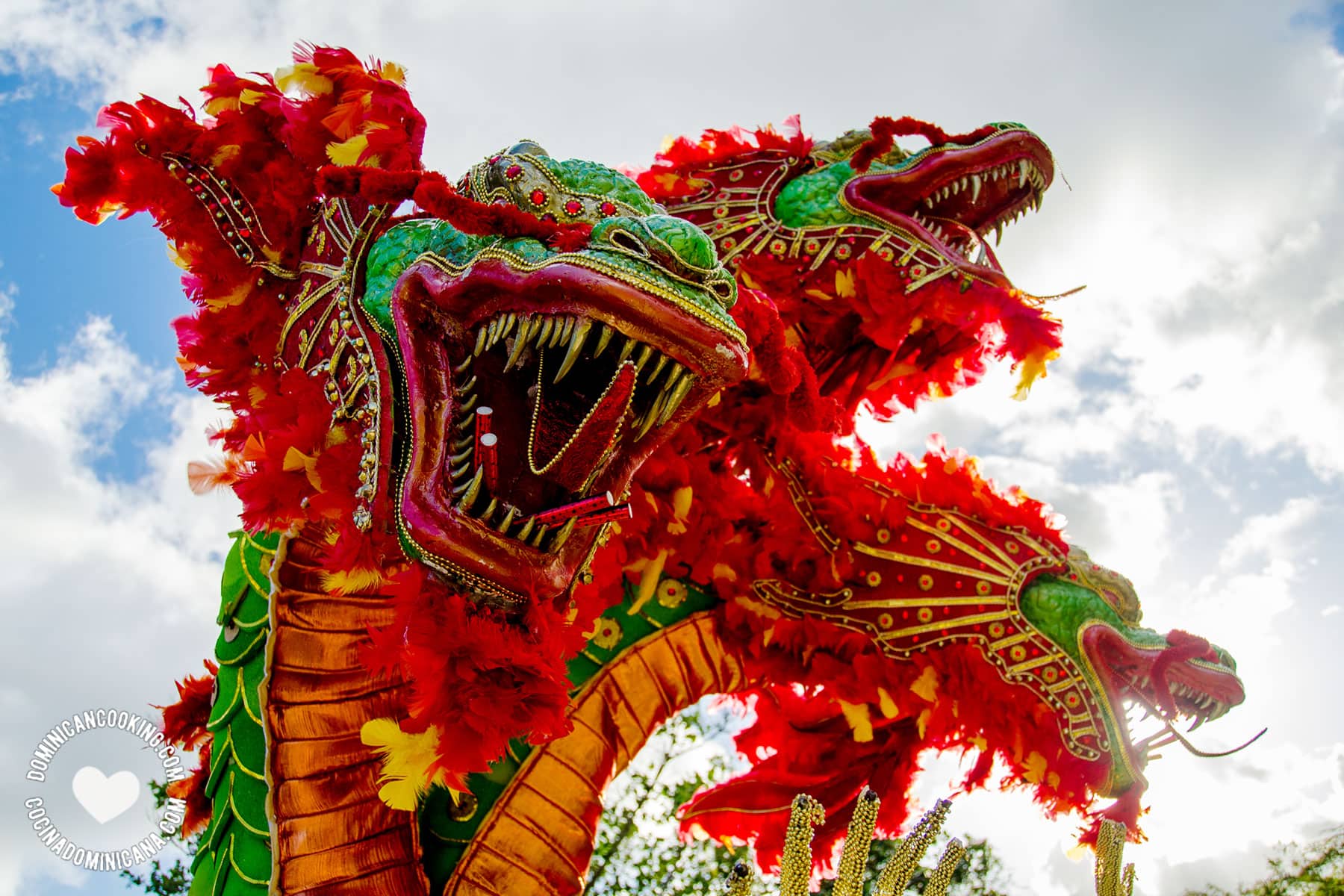
Chinese dragon-inspired Carnival float
One such restaurant in the DR was the Chinese-owned Sang Lee Lung roadside stop near Bonao on the highway between Santo Domingo and Santiago, during the Trujillo dictatorship in the mid-20th century. It was especially famous for its chicharrones de pollo. In those days the road was bad and the journey took several hours.
Travelers who stopped at the restaurant included high-ranking government and military officials, and possibly also the dictator himself. As the story goes, the restaurant owners would overhear them discussing their business, and were said to be aware of sensitive information and government plans before anything was made public. It is said to be the origin of the popular Dominican saying “Eso lo saben hasta los chinos de Bonao” (even the Chinese from Bonao know this), which is told to someone who is the last to hear about something.
An article in a Taiwanese magazine in Spanish explains it as follows:
“To avoid problems in those uncertain times, the Chinese who worked in the restaurant would keep firmly silent about what they heard. For this reason, whenever asked, they would say they knew nothing. But really, they knew everything. [The saying] also shows the level of affinity between the Chinese presence and Dominican identity.”
References
- Various articles from the DR Chinese community’s Fundación Flor Para Todos.
- Chong, Luis M. "República Dominicana: de los 'chinos de Bonao' a la cooperación." Noticias: boletín informativo sobre Taiwan 44.14 (2014): http://noticias.nat.gov.tw/ct.asp?xItem=168914&CtNode=1697.
Published Jan 27, 2005, and last revised


